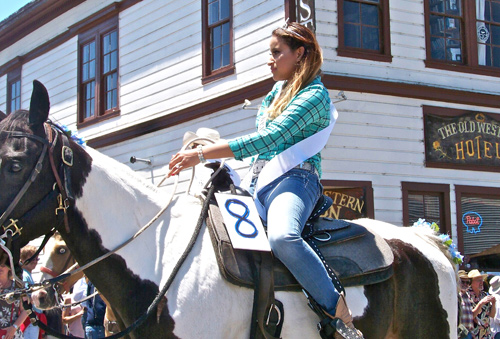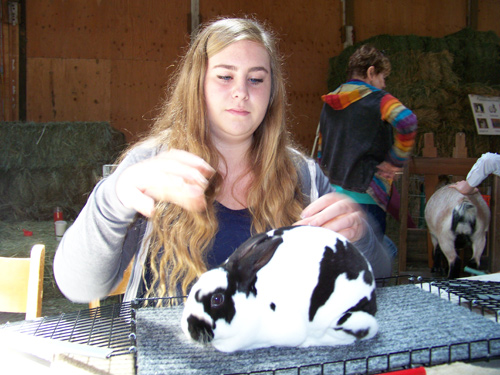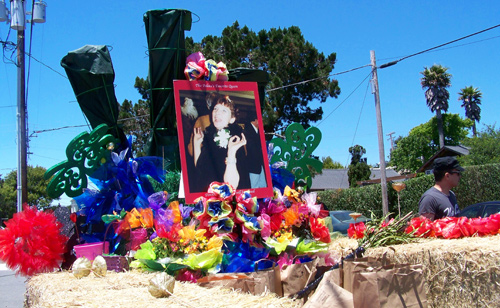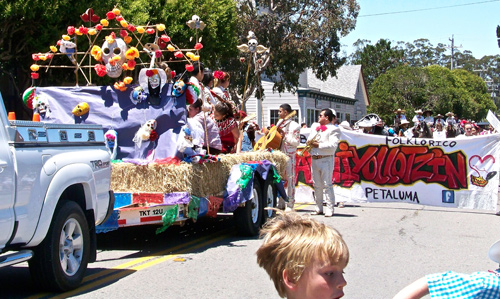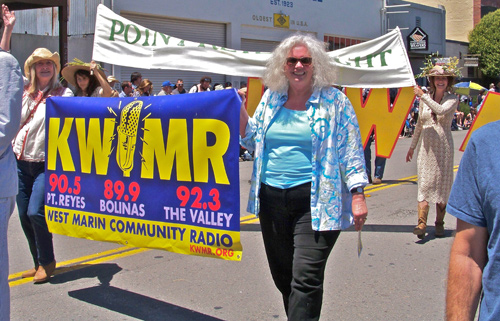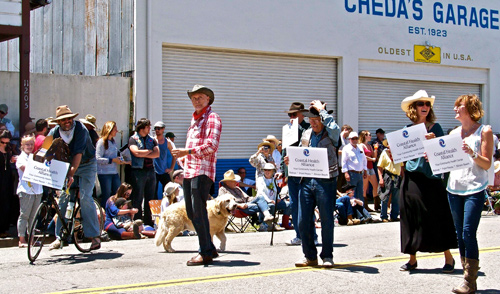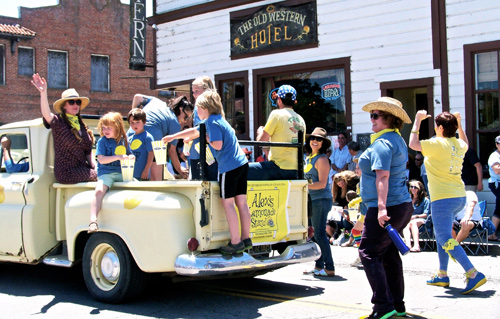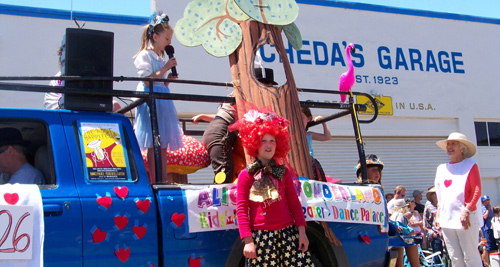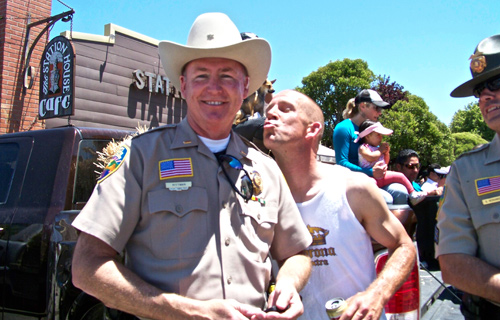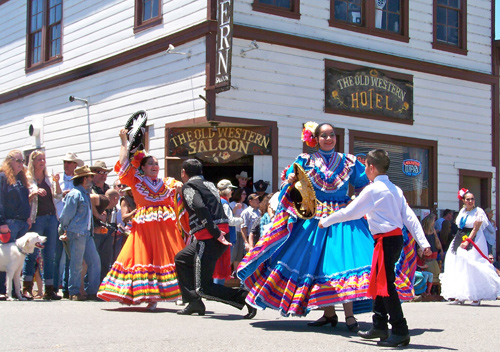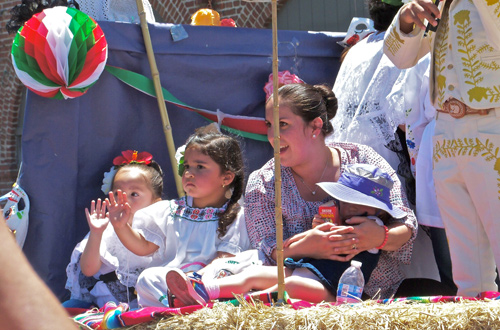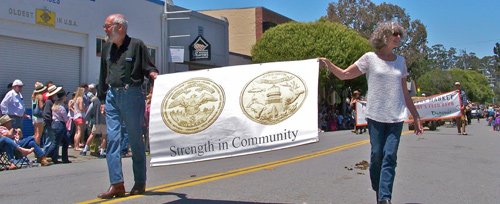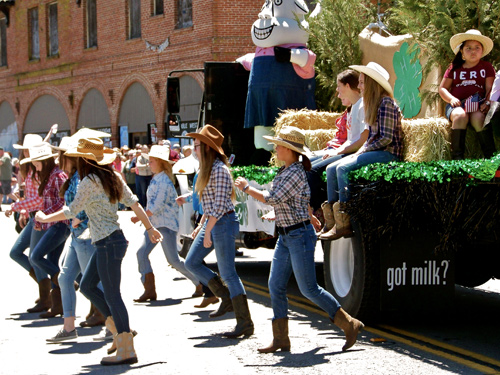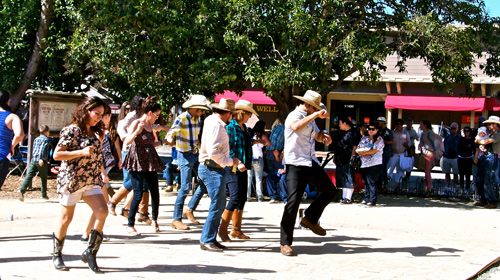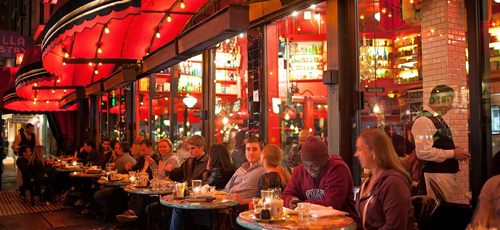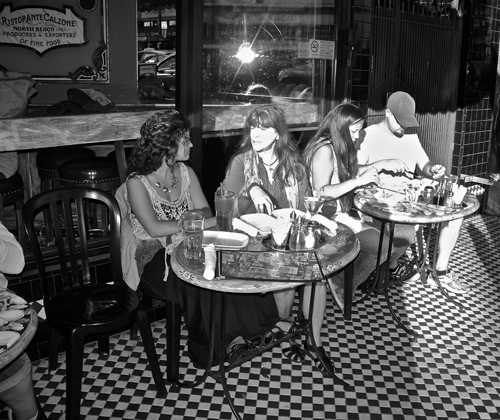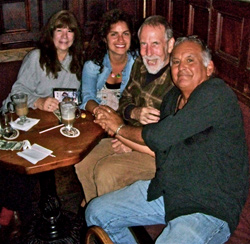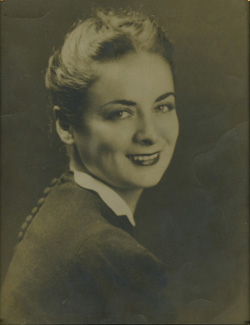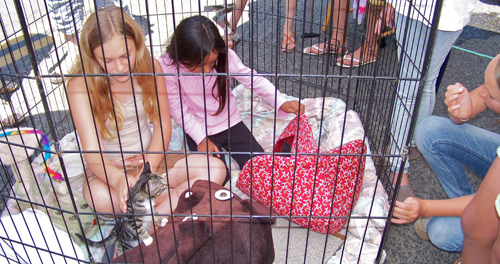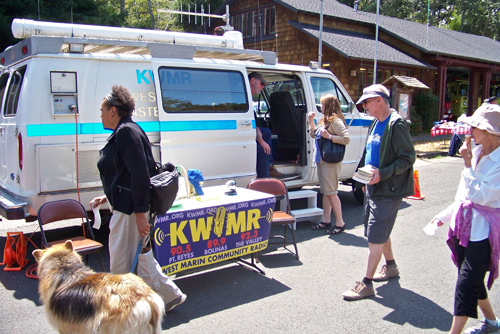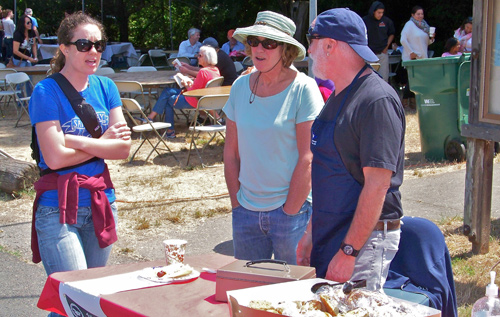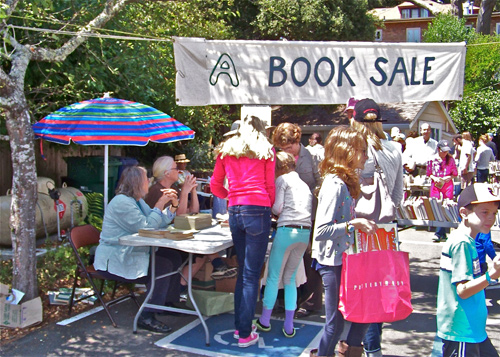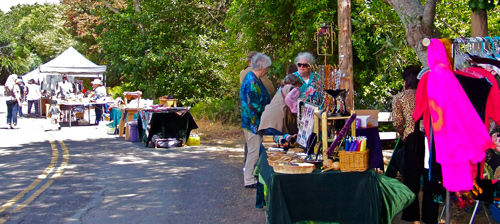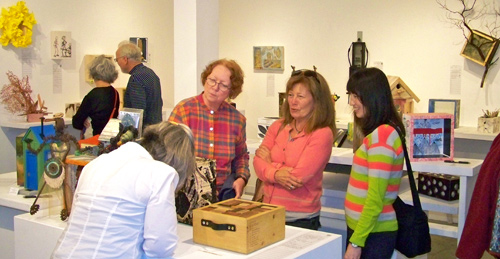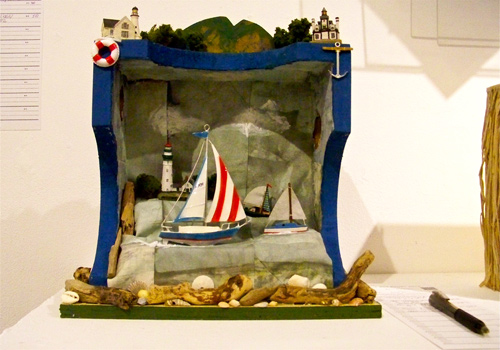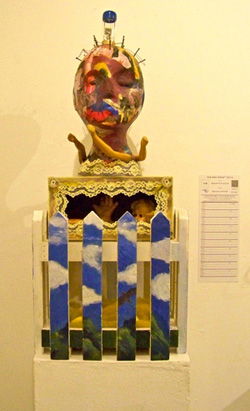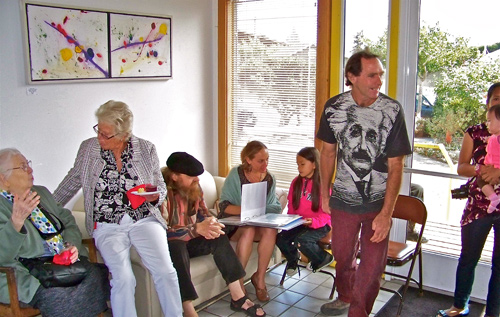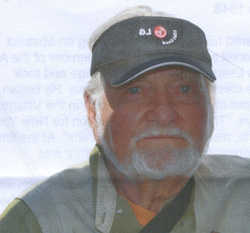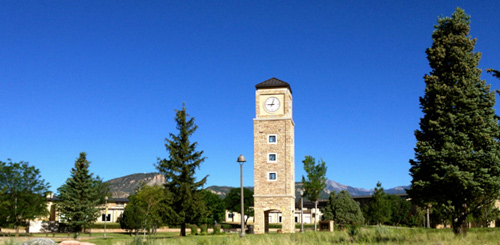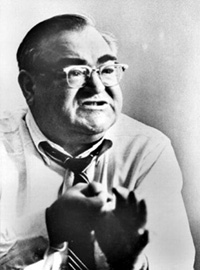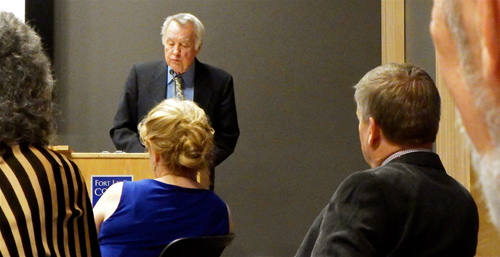Entries tagged with “Lynn Axelrod”.
Did you find what you wanted?
Thu 4 Aug 2022
Posted by DavidMitchell under General News, Marin County, Point Reyes Station
Comments Off on A ‘National Night Out’ party in Point Reyes Station draws crowd
Caveat lectorem: When readers submit comments, they are asked if they want to receive an email alert with a link to new postings on this blog. A number of people have said they do. Thank you. The link is created the moment a posting goes online. Readers who find their way here through that link can see an updated version by simply clicking on the headline above the posting.
National Night Out block parties and cookouts are held across the country, US territories, and in military bases in the beginning of August, to help develop neighborhood camaraderie and develop positive relations between communities and law enforcement.
 Point Reyes Station holds one every year in front of the Arthur Disterheft Public Safety building, and this year’s celebration — complete with a barbecue, ice cream, and a band — was held Tuesday. Pictured center-left in sunglasses is Marin County Fire Dept. Battalion Chief Bret McTigue. In khaki (and a mustache) to the right is Marin Sheriff’s Sergeant and Public Information Officer Brenton Schneider.
Point Reyes Station holds one every year in front of the Arthur Disterheft Public Safety building, and this year’s celebration — complete with a barbecue, ice cream, and a band — was held Tuesday. Pictured center-left in sunglasses is Marin County Fire Dept. Battalion Chief Bret McTigue. In khaki (and a mustache) to the right is Marin Sheriff’s Sergeant and Public Information Officer Brenton Schneider.

Several county fire department personnel, including Battalion Chief Bret McTigue, standing behind the Hog Island Oyster grill were on hand. The barbecues were set up in front of the public safety building, which houses the Point Reyes Station firehouse and the sheriff’s substation.
On a more serious note, last reports were that the Marin County Fire Department sent crews running five fire engines and a bulldozer to help fight the McKinney Fire, northwest of Yreka in Siskiyou County. We wish all first responders a safe return. The wildfire started Friday, July 29, and has now grown to almost 59,000 acres with only 10 percent containment. There have been four deaths of residents.
 Lineup of community members (L to R): Ron Wagner, my wife Lynn Axelrod, Tom Quinn, Ken Levin, Jeri Quinn. Ron is perusing disaster readiness info at Lynn’s table. Lynn is coordinator of the Point Reyes Disaster Council. (Photo by Rhonda Kutter)
Lineup of community members (L to R): Ron Wagner, my wife Lynn Axelrod, Tom Quinn, Ken Levin, Jeri Quinn. Ron is perusing disaster readiness info at Lynn’s table. Lynn is coordinator of the Point Reyes Disaster Council. (Photo by Rhonda Kutter)

Cindy Morris of Point Reyes Station and Supervisor Dennis Rodoni hold up some disaster readiness information. More is available at pointreyesdisastercouncil.org.
The free barbecue drew a large crowd of West Marin residents and lasted until 8 p.m. If you missed it, be sure to attend the one next summer.
Tags: Brenton Schneider, Bret McTigue, Cindy Morris, Jeri Quinn, Ken Levin, Lynn Axelrod, National Night Out, Point Reyes Disaster Council, Ron Wagner, Supervisor Dennis Rodoni, Tom Quinn
Mon 31 Oct 2016
Posted by DavidMitchell under Point Reyes Station
Comments Off on Undeterred by rain, small-town Halloween celebrations held throughout Pt. Reyes Station
Despite wet weather, celebrations of Halloween and Dia de los Muertos enlivened Point Reyes Station Saturday and Sunday in advance of Monday’s trick or treating.

Wendi Kallins (left), a candidate for county supervisor in the June primary election, and Constance Washburn as “Super Gaia” during the Day of the Dead party in the Dance Palace Saturday evening. The altar is decorated with memorials for deceased friends and relatives.

Toby’s Feed Barn also held a Halloween party with a Dia de los Muertos altar Saturday night. Here Feed Barn owner Chris Giacomini enjoys the decorations.
On Sunday, the festivities continued across town.

In the firehouse, the annual pancake breakfast prepared by firefighters from Point Reyes Station and Inverness was held Sunday morning as a benefit for the Point Reyes Disaster Council.

Marty Frankel (left) and Eileen Connery selling tickets at the pancake breakfast. Lynn Axelrod (far right), coordinator of the Point Reyes Disaster Council, checks out the crowd at the breakfast.

For youngsters, one of the highlights of the pancake breakfast was a chance to take a firetruck ride around town.
Also on Sunday, Papermill Creek Children’s Corner preschool held a Halloween party in the Dance Palace.
Enthusiastic party goer at the Dance Palace takes a run between the rains that fell sporadically Sunday.


For the youngest children, the chance to ride a horse around the block was a special thrill.

Wearing tiger ears framing an exit sign, Lourdes Romo, executive director of the preschool, with three of her young charges.

Halloween costumes: Everywhere in town, many adults and children wore costumes all day Monday. The most realistic costumes I saw were worn by this group of trick or treaters, who showed up at our door that evening.
Mon 8 Jun 2015
Posted by DavidMitchell under agriculture, Point Reyes Station
Comments Off on Western Weekend this year proved to be especially colorful
Point Reyes Station’s 66th Western Weekend this past Saturday and Sunday continued a colorful tradition that began in 1949 when a women’s group, Companions of the Forest: Circle 1018, held a festival, fashion show, and cake walk in their hall. (The Foresters’ Hall on Mesa Road still survives under private ownership. It’s immediately north of the Old Creamery Building.)
The following year, members of the local Lions Club, many of whom were married to Circle 1018 members, added a parade and a livestock show for 4-H and Future Farmers of America members. The event was called a “junior” livestock show because all those showing animals were 4-H and FFA members.
When I came to town in 1975 and my newspaper called the event Western Weekend, as many people by then did, more than a few oldtimers told me the proper name was the West Marin Junior Livestock Show. “Western Weekend,” they grumbled, was the name of the livestock show in Novato.

Western Weekend queen Graciela Avalos in Sunday’s parade.

Nigel, left, and his cousin Annabelle make contact during the West Marin 4-H Fair on Saturday at Toby’s Feed Barn. Sisters Olivia and Phoebe Blantz of Nicasio brought them as they have in past years, so they are all regulars.

Eva Taylor, 6, holds an eight-week old Champagne D’Argent rabbit. The breed was brought to the U.S. from France in the early 1900s. They are known to have been bred since the 17th century, according to Dorothy Drady of Nicasio, who oversaw their care at the fair.

Megan Binford, 14, of Tri-Valley 4-H, shows a four-month old Broken Black Mini-Rex doe named Ribbons, or, as a local rancher quipped, “a Holstein rabbit.”

A float in memory of Dorothy Rocca, who died this past year. She was the longtime owner of the Palace Market. The entry took first place in adult floats.

The exciting music and dance of Ballet Folklorico of Petaluma Paquiyollotzin wowed the crowds all along the parade route.

KWMR Community Radio and The Point Reyes Light marched together in a media section of the parade. The entry took 2nd place among adult floats.

Lynn Axelrod was among the MainStreet Moms calling for people to drink tap water rather than bottled water, which clutters the environment with plastic bottles. Mom Kathryn Callaway created the signs for her sisters.

The Coastal Health Alliance on the march.

Alex’s Lemonade Stand Foundation is dedicated to eradicating childhood cancer. The organization is named after a child who sold lemonade to raise funds for other kids, leading to a global effort that totaled more than $1 million. Ezequiel (Ez) Powell and the Porrata-Powell family will hold their own lemonade fundraiser Sunday, June 14, from 11 a.m. to 4 p.m. at the Town Commons.

Two young ladies took turns singing to the crowd as the Dance Palace Kids Musical Theater proceeded down the main street.

Towtruck driver Tim Bunce (right), who entered a 1953 Farmall Tractor in the parade, photo-bombs Sheriff’s Lt. Doug Pittman’s picture. Bunce took first in the Farm Vehicle division and first in the best-vehicle division.

More of the vibrant Mexican dancing in stunning costumes.

The littlest ones waved and snoozed from their float in the mid-day sun.

The Aztec Dancers took the first-place award for best street show.

Richard Kirschman and Doris Ober promoted the West Marin Fund, which encourages people to spend West Marin currency in West Marin.

Point Reyes-Olema 4-H Club took first place in the kids’ street show awards.

Mexican food was offered and mariachi dancing after the parade continued until about 8 p.m. in the West Marin Commons on the north end of the main street.

A woman draped in the colors of the Mexican flag dances at the Town Commons.
I’m still a bit gimpy as a result of a fall I took three weeks ago (and wrote about here), so my partner Lynn was good enough to fill in, shooting most of the photos for this posting and writing about half the text.
Tags: Aztec Dancers, Coastal Health Alliance, Doris Ober, Dorothy Rocca, Doug Pittman, Eva Taylor, Graciela Avalos, Lynn Axelrod, Mainstreet Moms, Megan Binford, Richard Kirschman, Tim Bunce
Sun 24 Aug 2014
Posted by DavidMitchell under General News
1 Comment
It all began in a dream one night earlier this month and ended in another dream during the wee hours this morning. Between the dreams were events of enough moment to command Lynn’s and my full attention.
Here’s how it started. My friend Janine Warner, who in the early 1990s reported for The Point Reyes Light, recently returned from a week of coaching journalists in Chile. Among the subjects she taught was how to use small drones to photograph news scenes. When she and her husband, Dave LaFontaine, called from Los Angeles, Lynn and I wanted to hear all about her classes.
However, conversations between old friends tend to wander onto numerous topics, and somewhere along the way, Dave brought up the topic of urban rats. As it happened, in 1983 during my two-year sojourn reporting for the old, Hearst-owned San Francisco Examiner, one news story I covered was the replacing of the sewer under Hyde Street on Russian Hill. As I told Dave, the old sewer had been so antiquated that it was made of bricks, not pipes, and rats regularly got into it through chinks between bricks in order to eat fat in the sewage. A bit to my frustration, however, I had a momentary mental block and could not come up with the name of the hill, only of the street.
Later that night, I was asleep in bed when Lynn asked me to roll over because I was snoring. I muttered something that Lynn didn’t understand, and she asked me, “What?” After being asked two or three more times while still only half awake, I said, “Russian Hill.”
“What about Russian Hill?” Lynn asked. “That’s where all the drones and small explosives are,” I replied. “Okay,” answered Lynn, “but please roll over. You’re snoring.” I mumbled, “I will have to do that,” but I was still mostly asleep and just sank lower into the pillow. Lynn got out of bed and went into the living room to sleep for awhile on the couch.
When we later got up, Lynn was curious as hell about Russian Hill, the drones, and small explosives. The first two were obvious, I said. Russian Hill was the name I hadn’t been able to remember while on the phone the night before when we were also talking about drones. As for the small explosives, the FBI on June 2 had made a much-publicized arrest of a well-established political consultant, Ryan Kelley Chamberlain, after a bag of components for homemade bombs was found in his Russian Hill apartment.
The associations the mind makes while dreaming can be amazing.

Calzone Restaurant on Columbus Boulevard in San Francisco’s North Beach, an historically Italian neighborhood and birthplace of the city’s Beat Generation.
And now for something completely different, as they used to say on Monty Python’s Flying Circus. The youngest of three stepdaughters from my fourth marriage, Shaili Zappa, last week flew out from Minneapolis where she is starting her senior year at the University of Minnesota. Lynn and I see her only every year or two, so when she visits, we like to take her to places that are also out of the ordinary for us.

Shaili (left) with Lynn at one of Calzone’s sidewalk tables where we stopped after picking her up at the airport.
My favorite San Francisco restaurant is Calzone’s, two and a half blocks north of Broadway. Not only does it serve excellent Italian fare, its sidewalk tables are great for people watching, which can be fascinating in North Beach. It’s open till 1 a.m. every day, and thanks to heat lamps, one can sit outside at midnight and not get cold.

Beach Blanket Babylon is the longest-running musical review in theater history with more than 15,000 performances in 40 years.
We headed back to North Beach Wednesday evening to take in Beach Blanket Babylon at Club Fugazi on Green Street. I’d been to the theater twice before, and each tongue-in-cheek performance was vastly different from the other but equally wonderful.
 A parody of Miley Cyprus twerking and Robin Thicke singing.
A parody of Miley Cyprus twerking and Robin Thicke singing.
To quote publicity for the current show: “Beach Blanket Babylon follows Snow White as she takes a fast-paced journey around the world in search of her ‘Prince Charming.’
“Along the way she encounters a star-studded, ever-changing lineup of hilarious pop-culture characters including President Barack & Michelle Obama, Miley Cyrus, Kim Kardashian and Kanye West, Prince William, Kate Middleton and their baby Prince George, Beyoncé and Jay Z, Paula Deen, Katy Perry, Governor Jerry Brown, Justin Bieber, Nicki Minaj, Hillary and Bill Clinton, Oprah Winfrey, Nancy Pelosi, Michael Jackson, Adele, Lady Gaga and the San Francisco Giants.”
We spent an hour and a half laughing and clapping. Shaili, who had never seen a musical review before, was at least as enchanted as Lynn and I were.

For more than 50 years, the No Name Bar in Sausalito has provided another home for the Beat Generation, and on Friday night we took Shaili there. In the rear is a covered garden where customers go to smoke and drink while socializing.
Drummer Michael Aragon has performed blues and modern jazz every Friday night at the No Name for 31 years. The Michael Aragon Quartet consists of Aragon on drums, Rob Roth on sax, Pierre Archain on base, and KC Filson on keyboard. _________________________________________________________________
 Much of Michael Aragon’s jazz reminds me of the late John Coltrane’s. It tends to be free-flowing and spirited but never chaotic.
Much of Michael Aragon’s jazz reminds me of the late John Coltrane’s. It tends to be free-flowing and spirited but never chaotic.
I’ve followed his work for years, and I’m playing his CD Horizon Line while I write this.
From left: Lynn Axelrod, Shaili Zappa, Dave Mitchell, and Michael Argon at the No Name Bar. ______________________________________________________________
Then came the South Napa Earthquake. Shaili flew back to Minneapolis Saturday evening, and Lynn went to bed around midnight to catch up on her sleep after several late nights. I’m more of a night owl, and at 3:20 a.m. I was still sitting at my computer reading an al Jazeera article when the house began to shake.
Oh, we’re just having an earthquake, I thought. When the quake continued and got stronger, however, I began to wonder if the roof would collapse. As soon as the shaking stopped, I hurried downstairs to check on Lynn.
The shaking had awakened her, sort of. Patting the bed next to her she asked, “Where’s mom?” I was confused. “Where’s our mother?” she demanded. “There’s no mom here,” I answered. “You’re still dreaming.”
 Frustrated, Lynn got out of bed to look for her mother and make sure the earthquake hadn’t done her any harm.
Frustrated, Lynn got out of bed to look for her mother and make sure the earthquake hadn’t done her any harm.
Still half asleep, she walked across the room and stepped into the hall where she finally woke up.
Lynn’s mother, Miriam Axelrod (at left), died in 1998.
At first I didn’t fully understand what had happened although Lynn began to laugh about her dream.
As it turned out, she had recognized me but in her mind had blended me with her brother whom she hasn’t seen in years.
Once again I say: the associations the mind makes while dreaming can be amazing.
As for the quake itself, the US Geological Survey website, which Lynn immediately checked, listed it as magnitude 6.1. Hardest hit was the Napa area 35 miles away where more than 200 people were injured, three of them critically including a 13-year-old boy hit by bricks from a collapsing chimney. Fifteen buildings in downtown Napa received major damage, and numerous others in Napa and Vallejo had moderate damage.
In addition, four mobilehomes were destroyed by fire and at least two others damaged, presumably because the quake broke gas lines. The quake also brought down powerlines in Contra Costa County, blacking out 69,000 homes and businesses. Some wineries in Napa and Sonoma counties received extensive damage and lost large amounts of wine in barrels, vats and bottles.
Between two memorable dreams there intervened great food, great theater, great jazz, and great damage. It’s been an interesting fortnight.
Tags: Beach Blanket Babylon, Beat Generation, Calzone Restaurant, Lynn Axelrod, Michael Aragon Quartet, Miriam Axelrod, No Name Bar, North Beach, Russian Hill, Ryan Kelley Chamberlain, Shaili Zappa
Sun 10 Aug 2014
“What sort of day was it?” the late CBS anchorman Walter Cronkite used to ask at the end of each installment of You Are There, a reenactment-of-history series that aired from 1953 to 1957. Then answering his own question, Cronkite would add, “A day like all days, filled with those events that alter and illuminate our times… and you were there.”
And I was there, but rather than try to reenact events, I’ll just show you the pictures. Yesterday at the foot of Tomales Bay, the neighboring small towns of Inverness and Point Reyes Station were filled with events that alter and illuminate our times in West Marin.

The biggest event Saturday, the Inverness Fair, as always offered a mix of music, fundraising for local civic groups, people selling arts and crafts, and good food.
The fair is held each year along Inverness Way between the firehouse and the library. On Saturday, Latinas sold Mexican food beside the firehouse to raise money for Tomales Bay Waterdogs, which teaches children living around the bay the crucial skill of swimming. (Maria Niggle at right)
The women’s aprons all said, “Thank You, Maidee Moore.” Maidee, who founded the Waterdogs almost 45 years ago, died last month at the age of 101.

A display that attracted crowds throughout the fair was this Planned Feralhood cage where young people played with kittens that were up for adoption. Kathy Runnion of Inverness Park, who heads the program, was able to find new homes for five of the nine available.
Because the kittens are in the midst of spay, neuter, and vaccination routines, the new owners could not take their cats immediately home from the fair. The delay will at least give them a few days to prepare for the kittens.

Inverness Garden Club again this year sold plants to raise funds for its civic programs. The club maintains plantings on the median of Sir Francis Drake Boulevard through downtown, at Inverness, aptly named Plant Park, at the Gables (which houses the Jack Mason Museum and Inverness Library), at the Point Reyes Station Post Office, and at the Point Reyes Station Library.

The KWMR radio van, which also provides communications for the West Marin Disaster Council, was on hand to raise funds for the community-radio station and recruit volunteers for the Disaster Council. Here Point Reyes Station Disaster Council coordinator Lynn Axelrod talks about communications with Richard Dillman as he sits inside the van.
Dillman is the communications engineer for the Disaster Council and the “transmitter wrangler” for KWMR. He spent 30 years as a special-services officer for Greenpeace, and in 2011, the environmental group donated the van to the nonprofit radio station.

Inverness Yacht Club Youth Sailing program sold grilled hotdogs as a fundraiser for its classes that have taught many young people how to sail. As a former sailboat owner, I didn’t want to be tacky, so I bought a hotdog. Yummy.

Outside the Inverness Library, used books were sold as a benefit for the library system. By the end of the fair, the sellers were offering: “All the books you can put in a shopping bag, $5!”

Tables displaying a variety of arts and crafts for sale attracted fairgoers arriving and leaving on Inverness Way.

Meanwhile in Point Reyes Station, Gallery Route One is in the midst of its annual fundraising “Box Show.”

The show is both an exhibit and a silent auction, featuring three-dimensional works that at least in part take their shape from a box. This box created by Jane Santucci is called Sail A-Weigh.

I’m Feeling Beachy is the title of the box at left, which was created by artist Geraldine Lia Braaten. The box at right, Searching for Water, is the work of artist Ellen Gray. ______________________________________________________________________
 An eerie Society’s Child box by Sandra Aufang.
An eerie Society’s Child box by Sandra Aufang.
_____________________________________________________________________
Meanwhile, five blocks away at the other end of Point Reyes Station yesterday….

Gathered below Ralph Stein’s painting Negative Spin.
Friends, relatives, and admirers of artist Ralph Stein of Point Reyes Station gathered at the Dance Palace Community Center for a memorial showing of his paintings. Stein, who was born in Milwaukee in 1928, died Feb. 24 in Sausalito surrounded by his family. An intermittent resident of Sausalito, Stein had moved to Point Reyes Station in 2012. _____________________________________________________________
 Stein (right), an abstract expressionist like Jackson Pollock, had studied art in New York City.
Stein (right), an abstract expressionist like Jackson Pollock, had studied art in New York City.
While hanging around with other “Bohemians,” as they were called, he got to know such art-world luminaries as Pollock, William de Kooning, and Robert Motherwell.
He became a personal friend of poet Grace Paley. ___________________________________________________________________

During a reception for the memorial exhibit, Bruce Fox performed surprisingly melodic music on this steel drum from Switzerland. The UFO-shaped instrument is called a hang (pronounced hawn). By tapping on different parts of the hang, Fox was able create an impressive range of resonant notes.

Stein’s determination to become an abstract expressionist painter intensified after he suffered a stroke in 1962, which affected his language center. As a painter, he would not need to use words, he told himself. Fortunately, he was able over time to regain his ability to speak normally.
The artist’s paintings will remain on display in the lobby of the Dance Palace until Sept. 14.
Tags: Bruce Fox, Ellen Gray, Gallery Route One, Geraldine Lia Braaten, hang musical instrument, Inverness Fair, Inverness Garden Club, Inverness Yacht Club Youth Sailing, Jane Santucci, KWMR, Lynn Axelrod, Planned Feralhood, Ralph Stein, Richard Dillman, Sandra Audfang, Tomales Bay Waterdogs, West Marin Disaster Council
Sat 5 Jul 2014
My life companion Lynn Axelrod and I have just returned from Durango, Colorado, where we attended an annual conference of the International Society of Weekly Newspaper Editors at Fort Lewis College.
Two posts will deal with our adventures. The second will concern transportation, ranging from driving “the highway to hell” (in the words of the Durango Herald) to travel by old-fashioned steam engine and modern Amtrak. Because this first post deals with my receiving a journalism award, I’ve let Lynn prepare it.

Fort Lewis College in Durango, Colorado, opened in 1891 as a boarding school for Native American Indians and remained so until the 1930s when it became a two-year college. In 1956, it was relocated from the town of Hesperus to its present location 18 miles to the east and became a four-year college. Under federal law, Indian students attend it tuition free. (Photo by Tim Waltner, member of the International Society of Weekly Newspaper Editors and publisher of the Freeman Courier in South Dakota)
By Lynn Axelrod
The highest international award in the English-speaking world for editing a weekly newspaper went to Dave Mitchell of Point Reyes Station last week.
Mitchell, 70, who retired in November 2005, edited and published The Point Reyes Light for 27 years. On June 28, Mitchell received the award in Durango, Colorado, during the annual conference of the International Society of Weekly Newspaper Editors (ISWNE).
Editors from throughout the United States and Canada, as well as from England, Scotland, and Australia, were on hand.
 Mitchell’s “Eugene Cervi Award” is named after the late editor and publisher of the Rocky Mountain Journal in Denver, where some Colorado politicians once called the liberal newspaperman “the most dangerous man in Denver.”
Mitchell’s “Eugene Cervi Award” is named after the late editor and publisher of the Rocky Mountain Journal in Denver, where some Colorado politicians once called the liberal newspaperman “the most dangerous man in Denver.”
Eugene Cervi (at left)
After he died in 1970, the New York Times described Cervi as “one of the most outspoken voices in American journalism,” ISWNE executive director Chad Stebbins has written.
The Eugene Cervi award recognizes “a newspaper editor who has consistently acted in the conviction that good journalism begets good government.”
The award is presented not for a single brave accomplishment, however deserving, but for a career of outstanding public service through community journalism and for adhering to the highest standards of the craft with the deep reverence for the English language that was the hallmark of Gene Cervi’s writing.
The award also recognizes consistently aggressive reporting of government at the grassroots level and interpretation of local affairs.

Chad Stebbins (left), executive director of ISWNE, and Mitchell standing with the Eugene Cervi Award, which is represented by a street-vendor “Newsman.”
Although the four-day conference was held in Colorado this year, ISWNE’s annual conferences are often held abroad: Calgary, Alberta, 1994; London, Edinburgh, Cardiff & Dublin, 1995; Halifax, Nova Scotia, 1999; Victoria, British Columbia, 2000; Galway, Ireland, 2003; Edmonton & Fort McMurray, Alberta, 2005; Charlottetown, Prince Edward Island, 2009; Coventry, England, 2011. In 2016, the group will head to Australia.
In 1979 when Mitchell and his former wife Cathy published The Light, the newspaper received the Pulitzer Prize for Meritorious Public Service. It was only the fourth year since the prizes were established in 1917 that any Pulitzer had gone to a weekly newspaper.
The prize was for an investigation and editorial crusade warning about violence and other illegal activities by the Synanon cult. Synanon, which officially dissolved in 1991, was headquartered on Tomales Bay in Marshall during much of the 1970s.
Mitchell’s new book, The Light on the Coast, which was coauthored by Jacoba Charles, includes key articles and opinion pieces about Synanon. Using news stories published when events occurred, The Light on the Coast tells the history of West Marin since the paper’s founding in 1948. At ISWNE’s request, Mitchell gave an hour-long talk on Synanon and other stories from the book. The Light’s reports on five waves of ethnic immigration to West Marin beginning in the 1850s were a major part of his talk.

Fort Lewis College, which is named after Lt. Col William Lewis, a hero of the Union Army in the Civil War, is in the San Juan Mountains of southwestern Colorado at 6,872 feet in elevation. It borders wildlands, and a small herd of mule deer graze the campus undisturbed.
Nominating Mitchell for the award were San Francisco Chronicle reporter and columnist Carl Nolte, retired Santa Fe Reporter editor and publisher Richard McCord, and California Newspaper Publishers Association executive director Thomas Newton.
Newton praised Mitchell for trying to make The Light the “New York Times of West Marin” and for his “swashbuckling journalism for the Hearst-owned San Francisco Examiner, including trips to El Salvador and Guatemala to cover the upheaval and insurrection of the time [1982-83].”
Commenting on Mitchell’s Pulitzer-winning reporting Nolte wrote, “Synanon was very tough. Big city papers went after the organization but were scared off by threats of lawsuits. But nobody and no lawsuit could stop The Light.”
He added, “Don’t think The Light is a one-trick pony. Mitchell has taken on the Park Service, which runs the [Point Reyes] National Seashore with an iron hand. He has also followed the immigration patterns on the land, from the now nearly vanished Miwok Indians to newer people.

Richard McCord (seen introducing Mitchell at ISWNE’s awards banquet) is best known nationally for his 1996 book The Chain Gang, which exposed the Gannett newspaper chain’s illegal efforts to drive competitors out of business.
In his letter of nomination, McCord focused on The Light’s Synanon exposé: “Despite warnings that he might be in physical danger, Dave Mitchell continued writing about Synanon in stories and editorials.”
During the awards dinner, Mitchell told the crowd he “had thought he was fading away like the old soldiers cited by Gen. Douglas MacArthur in his farewell speech to Congress,” ISWNE’s June 29 newsletter reported. “To me this is like winning a second Pulitzer. It had been so many years since I had put on a tie, I couldn’t remember how to tie it.”
Sun 8 Dec 2013
The April 12, 1956, edition of Point Reyes Station’s Baywood Press reported: “Mrs. Joe Curtiss’ television set caught fire last week, and the wall behind the set began burning.
“Before the fire department could answer the call, Margie picked up the set, threw it out the window, and proceeded to extinguish the blaze.”
That was the entire report, but Margie must have been a hardy soul because that early TV would have been big and heavy as well as hot.
 The Baywood Press, as The Point Reyes Light was called for its first 18 years, began publication on March 1, 1948.
The Baywood Press, as The Point Reyes Light was called for its first 18 years, began publication on March 1, 1948.
The newspaper’s coverage of the past 65 years of West Marin news, big and small, is the focus of a book its publisher, the Tomales Regional History Center, has just released.
The book’s cover at left.
I’m particularly interested in the book, The Light on the Coast, because I, along with Jacoba Charles, authored it.
The graphic artist was Dewey Livingston, formerly production manager at The Light. He is now the historian at the Jack Mason Museum of West Marin History and is an historian for the National Park Service.
The Light is in its 10th ownership, Marin Media Institute, and the evolution of the newspaper itself is part of the story. As editor and publisher for 27 years, I was responsible for the chapters covering the first eight ownerships. Jacoba, who is on The Light’s board of directors and formerly was a reporter for the paper, was responsible for the most recent two.

Flooding in Bolinas. The ferocious storms that periodically hit the coast have always received extensive coverage in The Light.
Highlights of the 354-page book include the evolution of West Marin agriculture; the effects of the arrival of the counterculture on local politics, law enforcement, and the arts; the creation of the Point Reyes National Seashore and the Golden Gate National Recreation Area.
Examples of The Light’s Pulitzer Prize-winning coverage of violence and other illegal activities by the Synanon cult are, of course, included in The Light on the Coast.
The newspaper’s complete series on the five historic waves of immigration to West Marin is also a central chapter.
The forefathers of many longtime families in West Marin arrived in immigrations from specific locales in: Ireland, Switzerland’s Italian-speaking Canton of Ticino, Croatia, and Portugal’s mid-Atlantic Azores. Researching their journeys to West Marin, as well as the more-recent immigration from Mexico, involved sending Light reporters abroad four times between 1988 and 1997.
 This illustration for Sheriff’s Calls by cartoonist Kathryn LeMieux’s was often used in Western Weekend editions. The final section of our book consists of some of the more unusual Sheriff’s Calls from the the past 38 years.
This illustration for Sheriff’s Calls by cartoonist Kathryn LeMieux’s was often used in Western Weekend editions. The final section of our book consists of some of the more unusual Sheriff’s Calls from the the past 38 years.
The Light on the Coast features, along with a variety of news and commentary, a sampling of cartoons, advertising, and photography (including 10 portraits by Art Rogers). My partner Lynn Axelrod and I reviewed almost 3,000 back issues of The Point Reyes Light/Baywood Press in compiling the book. Jacoba reviewed more than 400. After making our selections, she and I wrote background narratives for many of them.
Those who’ve read the book have had good things to say about this approach of presenting West Marin’s history through the pages of The Light. Commenting on the book, San Francisco Chronicle reporter and columnist Carl Nolte writes: “The Point Reyes Light is a great window into a fabulous small world.”
Dr. Chad Stebbins, executive director of the International Society of Weekly Newspaper Editors, is likewise enthusiastic: “Dave Mitchell and The Point Reyes Light are synonymous with top-shelf newspapering. Dave is one of the few small-town editors ever to win a Pulitzer Prize; his investigation of the Synanon cult is a textbook example of tenacious reporting. His witty and colorful anecdotes always make for good reading.”
The Light on the Coast is available at Point Reyes Books for $24.95 plus tax.
It can be ordered online from the Tomales Regional History Center bookstore for $29.95 including tax and shipping.
Sun 24 Nov 2013
Posted by DavidMitchell under Dave Mitchell
[3] Comments
On Saturday I became a septuagenarian, having been born near the midpoint of U.S. fighting in World War II. There was no special celebration for my 70th, but Lynn and I nonetheless had a good time.

Lynn stands in the garden area at the entrance to Heidrun Meadery’s tasting room.
We started out the day at Heidrun Meadery, which two years ago opened across Highway 1 from Campolindo Road, where Mitchell cabin is located.
Despite its being so close, Lynn and I had not previously visited the meadery. Most of the time, guests need to make reservations for mead tastings, but on Saturday the meadery held a “holiday open house.” Another is scheduled for Dec. 7.

Heidrun owner Gordon Hull tells guests about the different varieties of mead he produces.
Mead is an alcoholic drink made by fermenting honey and water. In various parts of Europe, it has been popular for centuries. Heidrun’s meads are bubbly, having been made with the same method used to make champagne. Despite the honey content, Heidrun meads tend to be more dry than sweet.

Inside Heidrun’s tasting room.
The meadery was founded in Arcata, Humboldt County, in 1997 and moved to Point Reyes Station in 2011.

Avery Giacomini describes how one cheese differs from another.
Point Reyes Farmstead Cheese gave out samples of Point Reyes Original Blue cheese and Point Reyes Toma cheese during the mead tasting.
Cheese company owner Bob Giacomini grew up on his father’s dairy ranch in Point Reyes Station. In 1959, he purchased pasture land three miles north of town and went into the milk business on his own. In August 2000, the farm produced its first rounds of blue cheese, describing it as “California’s only classic-style blue cheese.”
The cheese, which is not as sharp as some blue cheeses, was immediately popular. In 2011, Point Reyes Original Blue won the gold medal for Outstanding Cheese/Dairy Product from the National Association for Specialty Food Trade. This year, Point Reyes Bay Blue won the gold medal for Best New Product while Point Reyes Toma was named the Outstanding Cheese/Dairy Product.

As it happened, musician Ingrid Noyes of Marshall (in the center talking with me) invited a number of other musicians over to play Saturday. Her friend, Victor Reyes (upper left), who writes a Spanish-language column for The Point Reyes Light, is also a longtime friend of mine, and he made sure Lynn and I were included. (I brought my harmonica.)

Cake on a stick.
By chance, Saturday was the birthday for three of us at the party, and Lynn brought a chocolate-fudge cake. The cake contained so much fudge that I was able to pick up my piece with the long birthday candle stuck in it. So that was the way I ate it, calling it “cake on a stick.”

Shaili (at center) in Kenya.
I received birthday greetings from several friends and relatives, but by far the most distant greeting came from my stepdaughter Shaili, who is in Kenya taking part in a study-abroad program of the University of Minnesota.
Although our voices faded in and out, Shaili, Lynn, and I were able to chat by cellphone. Other than getting help from tech support in India, neither Lynn nor I had previously talked on the phone with anyone so far away. The time in Kenya is 11 hours ahead of the time in Point Reyes Station.
Shaili is working at an education center for Maasai girls, who too often are forced into marriage before getting schooling. Lynn and I are extremely proud of her, and I couldn’t hope for a better 70th-birthday present than hearing her good wishes from rural Africa.
Tue 20 Aug 2013
Struggling to breathe, a juvenile fin whale washed ashore at Stinson Beach early Monday. The 42-foot-long male weighed roughly 11 tons.

The whale appeared to have taken a beating thrashing around in shallow water. There was also trauma to its right side, which could have come from colliding with a ship. That’s been known to happen here. The fin whale’s only natural enemy is the killer whale (i.e. orca). Photos by Lynn Axelrod
The California Marine Mammal Center based on the Marin Headlands handled the scientific aspects of the death. After a volunteer at 7 a.m. reported a beached whale was dying, the center dispatched a veterinary team to investigate.

The National Park Service had managed to turn the whale so that it was headed back out to sea, but the whale was already dead by the time the veterinary team arrived around 9 a.m.

After the whale died, a Park Service lifeguard tied a cord around the whale’s tail so that it could be dragged onto the beach with a backhoe.

The whale proved to be too heavy, however, and the line snapped the first time the Park Service tried to pull the corpse ashore.
“The veterinary team has since performed a necropsy (animal autopsy) to try to determine the cause of death,” the center reported later in the day. “Once the whale was rolled over, the Marine Mammal Center’s director of veterinary science, Dr. Shawn Johnson, discovered trauma to the sternum area and internal hemorrhaging around the heart.
“In addition, air [bubbles were] present in the subcutaneous tissue, indicative of trauma.” However, the center added, “There were no broken bones discovered.”
The severe trauma to the whale’s right side was found upon further examination.

Numerous radio stations, several television crews, and a number of newspaper reporters and photographers massed on the beach to cover the fin whale’s death. It was the second in a year in West Marin waters. A 47-foot-long fin whale washed ashore at Point Reyes last year after having been struck by a ship.

“Fin whales are the second largest marine mammal on earth, next to blue whales, and belong to the family of baleen whales,” the Marine Mammal Center wrote on its website.
Unfortunately, fin whales are on the federal list of endangered species, and the death of this young leviathan upset many observers. It brought tears to the eyes of my partner, Lynn Axelrod, who covered the sad event for The West Marin Citizen.

The young victim with the town of Stinson Beach in the background.
Even before it began to decay, the whale’s corpse was giving the area a fishy odor. After the whale was cut up by Mammal Center staff, the Park Service buried it eight feet deep further up the beach. Microbes in the sand will cause the fat and tissue to decompose but leave the bones intact.
This was only the latest of many whale burials at the beach. Some 31 whales have become stranded on Stinson Beach in the past 34 years, and even in death they are covered by the Marine Mammal Protection Act. Unless one has a permit, it is illegal to disturb the bones.
The Marine Mammal Center on Tuesday reported, “All we can determine at this stage is that the animal appears to have suffered blunt trauma which either caused, or likely contributed to, its death.
“The cause of that trauma is unknown at this time. Additional testing [on blubber from the whale] will potentially reveal other findings.”
Sun 14 Oct 2012
Tony’s Seafood in Marshall is known to most West Marin residents; less well known are its origins. Sitting on pilings over the water, the restaurant’s view of Tomales Bay is magnificent. So are its barbecued oysters, which feature a tomato-ey sauce that is particularly smooth and sweet.

Tony’s is the favorite restaurant of Inverness Park residents Linda Sturdivant (right) and her partner Terry Gray. Sunday was bright and clear along the bay, even warm. It was a perfect day for me to open the sunroof and drive the two of them and Lynn (left) four miles north for a seafood lunch.

Tony’s is open from 9 a.m. to 8 p.m. Fridays, from noon to 8 p.m. Saturdays and Sundays, and this flock of seagulls appears to have learned the schedule. They paddle around the restaurant hoping that diners after eating will throw them pieces of any leftover bread or French fries.

From a deck over the water on the southeast side of the restaurant, we watched jellyfish pulsating their bells as they propelled themselves away from the shore.

Restaurant matriarch Anna Konatich takes in the sun on the deck beside the bay. She and her husband Felix, who died in 2008, were born on the Croatian island of Iz. She immigrated to the US in 1947, he in 1937. Their family opened Tony’s Seafood Restaurant in 1948.
Felix was already living in Marshall when they became reacquainted in Seattle. He was part of a wave of Croatian immigration to the area that had begun in 1900. At least 14 families from the islands of Iz and Hvar settled in the tiny town of Marshall and, as Anna reminded me Sunday, at White Gulch directly across the bay.
Anna told me there were seven children in the first grade when her daughter entered school, and “three of them were Croatian.”
When I greeted her Sunday, I asked, “How’s the rebel?” The question sparked immediate laughter. Back on Iz 20 to 30 years ago, many residents considered her a radical nationalist.
In the years between the death of Yugoslavia’s longtime Communist ruler Marshal Tito in 1980 and the fall of communism in 1990-91, Anna visited Iz several times. It was a time when Communism was enforcing severe restrictions on Catholics. On one visit, she startled others in church by singing out the traditional lyrics to a Croatian national song that had been rewritten by the Communists. “Hey, you guys,” she told the others. “You can’t let the church fall apart like this. That’s our heritage.”
(In 1991, Croatia declared independence from Yugoslavia, and the European Economic Community in 1992 recognized Croatia as independent. The Yugoslav army and Serbian militia, however, battled the Croatian military from 1991 to 1995 in an unsuccessful attempt to partition the newly independent country.)

Outside Tony’s Seafood Restaurant after a hearty lunch are (from left) Linda Sturdivant, Terry Gray, Lynn Axelrod, Dave Mitchell.
Sometimes when I mention Marshall’s immigrant families from Croatia, I get a blank stare from other West Marin residents. “What Croatians?” they ask. In fact, they know the names. They just never realized they were Croatian.
Along with the Konatich family, who still run Tony’s Seafood Restaurant, other well-known names include the Vilicich family, who started the Marshall Boat Works in 1927, and Nick Kojich, who, with Felix Konatich’s father Tony, founded Nick’s Cove restaurant. And now you know who Tony was.
 Point Reyes Station holds one every year in front of the Arthur Disterheft Public Safety building, and this year’s celebration — complete with a barbecue, ice cream, and a band — was held Tuesday. Pictured center-left in sunglasses is Marin County Fire Dept. Battalion Chief Bret McTigue. In khaki (and a mustache) to the right is Marin Sheriff’s Sergeant and Public Information Officer Brenton Schneider.
Point Reyes Station holds one every year in front of the Arthur Disterheft Public Safety building, and this year’s celebration — complete with a barbecue, ice cream, and a band — was held Tuesday. Pictured center-left in sunglasses is Marin County Fire Dept. Battalion Chief Bret McTigue. In khaki (and a mustache) to the right is Marin Sheriff’s Sergeant and Public Information Officer Brenton Schneider. 
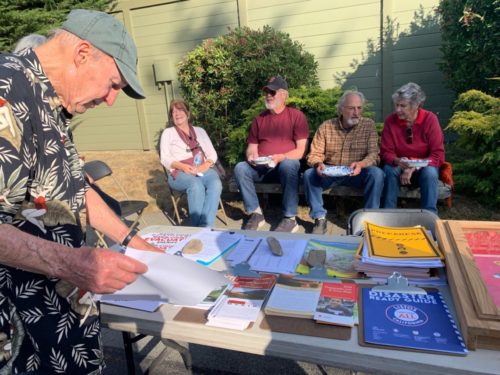 Lineup of community members (L to R): Ron Wagner, my wife Lynn Axelrod, Tom Quinn, Ken Levin, Jeri Quinn. Ron is perusing disaster readiness info at Lynn’s table. Lynn is coordinator of the Point Reyes Disaster Council. (Photo by Rhonda Kutter)
Lineup of community members (L to R): Ron Wagner, my wife Lynn Axelrod, Tom Quinn, Ken Levin, Jeri Quinn. Ron is perusing disaster readiness info at Lynn’s table. Lynn is coordinator of the Point Reyes Disaster Council. (Photo by Rhonda Kutter)











